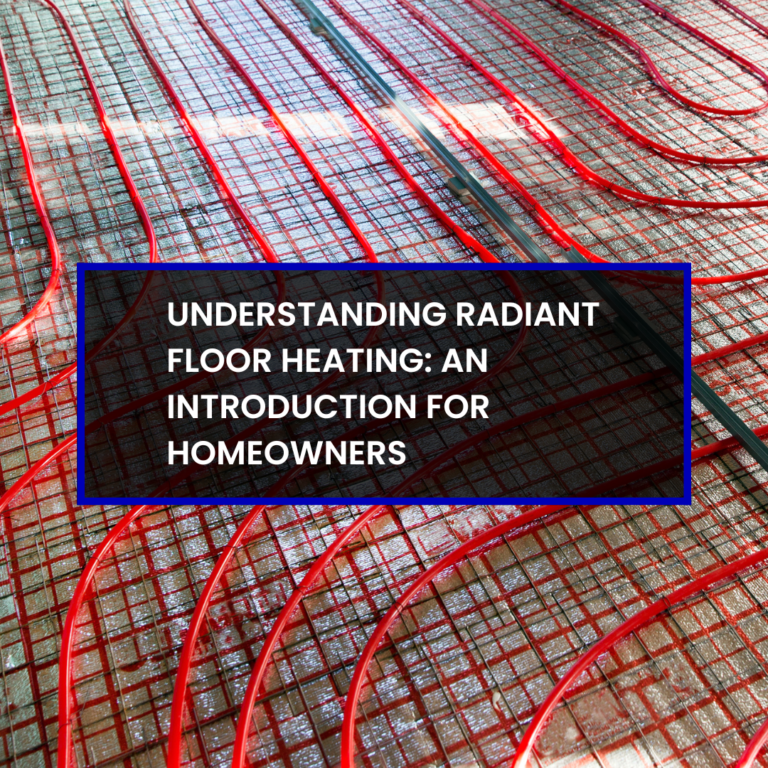What is Radiant Floor Heating?
Radiant floor heating is a method of home heating that involves installing heat sources beneath the floor surface. Unlike traditional heating systems, it distributes warmth directly from the floor, providing even and efficient heating across a room. This system typically uses either electrical coils or water-heated tubing to generate heat, which then radiates upwards into the living space. Unlike conventional radiators that heat air, radiant floor heating warms objects and people directly, ensuring a more comfortable environment. This heating method is known for its discretion and minimal visual impact, as the heating elements are completely hidden from view, offering a sleek and unobtrusive aesthetic.
How Radiant Floor Heating Works
Understanding the mechanics behind radiant floor heating is crucial for homeowners considering this system.
The Science Behind Radiant Heating
Radiant floor heating operates on the principle of heat transfer through infrared radiation. When the heating elements under the floor are warmed, they transfer heat directly to solid objects and people in the room, rather than heating the air. This direct transfer makes radiant heating particularly efficient, as there is minimal heat loss to the surrounding air. The warmth is evenly distributed across the floor surface, rising gently to heat the entire space uniformly. This method contrasts with traditional heating systems, where warm air rises to the ceiling, often resulting in uneven and inefficient heating.
Types of Radiant Floor Heating Systems
There are two primary types of radiant floor heating systems: electric and hydronic. Electric systems use thin heating cables, often embedded in mats, installed beneath the floor surface. These are ideal for smaller areas or individual rooms due to their ease of installation and control. Hydronic systems, on the other hand, circulate heated water through a network of tubing laid beneath the floor. These systems are often more cost-effective for whole-house heating and can be integrated with existing water heaters or boilers. Both types of systems can be installed under various floor materials, including tile, stone, laminate, and even carpet, offering versatility in home design. The choice between electric and hydronic systems depends on factors such as the size of the area, existing heating infrastructure, and homeowner preference.
Benefits of Radiant Floor Heating
Radiant floor heating is not just about warmth; it’s about redefining comfort and efficiency in home heating.
Energy Efficiency and Cost-Effectiveness
One of the most significant advantages of radiant floor heating is its energy efficiency. By directly heating objects and people, these systems minimize heat loss, making them more efficient than conventional heating methods. This efficiency translates into lower operating costs over time, as radiant heating typically requires less energy to maintain comfortable temperatures. Additionally, the systems can be zoned to heat specific areas of a home, further reducing energy consumption. The precise control offered by modern thermostats allows homeowners to adjust temperatures for different times of the day, enhancing both comfort and energy savings.
Comfort and Health Advantages
Radiant floor heating offers a level of comfort that traditional systems struggle to match. The even heat distribution eliminates cold spots and drafts, creating a consistently warm environment. This type of heating also contributes to a healthier home environment. Unlike forced-air systems, radiant heating does not circulate dust and allergens, making it an excellent choice for individuals with allergies or respiratory issues. The warmth underfoot, particularly in bathrooms and kitchens, provides a luxurious and comforting experience, especially in colder months.
Installation and Maintenance
Understanding installation and maintenance of radiant floor heating is essential for homeowners to prepare for the transition to radiant floor heating and ensure its long-term efficiency and effectiveness.
Preparing for Installation
The installation process for radiant floor heating varies depending on the type of system and the existing infrastructure of the home. For new construction, it’s often easier to install radiant heating during the building phase. However, for existing homes, considerations include the height increase of the floor level and the compatibility of floor materials. Professional assessment is crucial to determine the feasibility and the best approach for installation. Homeowners should also consider the initial investment, as radiant floor heating can be more expensive to install compared to traditional systems, but this cost is often offset by long-term energy savings.
Maintenance and Upkeep
Radiant floor heating systems are known for their low maintenance requirements. Electric systems, in particular, have very few moving parts and typically require minimal upkeep. Hydronic systems may need occasional checks to ensure the water pressure and temperature are maintained correctly, and to prevent any leaks in the tubing. It’s important to have a professional inspect the system periodically, especially for hydronic systems, to ensure optimal performance. The durability of these systems often means a longer lifespan compared to traditional heating methods, making them a worthwhile investment for homeowners.
Choosing the Right Radiant Floor Heating for Your Home
The final decision in opting for radiant floor heating involves several considerations.
Factors to Consider Before Installation
Before installing radiant floor heating, homeowners should consider several factors to ensure they choose the right system. These include the size and layout of the area to be heated, the type of flooring, the existing heating infrastructure, and the overall budget. The efficiency of the insulation in the home also plays a crucial role in the effectiveness of the radiant heating system. Consulting with a professional can provide insights into the best type of system for the specific needs of the home, whether it’s electric or hydronic, and can help determine the scope and cost of the installation.
Selecting the Right System for Your Needs
Selecting the right radiant floor heating system requires balancing personal preferences with practical considerations. For smaller areas or retrofit projects, electric systems might be more suitable due to their ease of installation and control. For whole-house heating or new constructions, hydronic systems are often preferred for their cost-effectiveness and efficiency on a larger scale. The choice of flooring material also influences the decision, as some systems work better with certain types of floors. Ultimately, the selection should align with the homeowner’s lifestyle, comfort preferences, and long-term energy goals.
Why Choose Us for Your Radiant Floor Heating Installation
Hometown Heating, with a proud history of 30 years in trusted service, represents the pinnacle of professionalism and quality in HVAC solutions. Our commitment to excellence is reflected in our prompt and professional service, high-quality products, and an unwavering 100% satisfaction guarantee. We understand that radiant floor heating is more than an installation; it’s an enhancement to your home’s comfort and value. With our expert team, you can expect top-tier workmanship, swift delivery of parts and products, and a seamless installation experience.
Choosing us means partnering with a company that values your comfort and time. Our team, skilled in both technical expertise and customer service, is dedicated to understanding and meeting your unique heating needs. We stand by our promise of delivering not just the best HVAC products but also an exceptional home comfort experience. Trust Hometown Heating to bring the efficient, luxurious warmth of radiant floor heating into your home.
Frequently Asked Questions
Is there a risk of overheating or burns with radiant floor heating?
The risk is minimal as these systems are designed to distribute heat evenly at a controlled temperature, which is typically lower than the threshold for overheating or burns.
Can radiant floor heating be retrofitted in historic or older homes?
Yes, it can be retrofitted, but it requires careful consideration of floor structure and height constraints. Professional assessment is essential.
How does the initial cost of radiant floor heating compare to its long-term savings?
While the upfront cost of installation is higher than traditional heating systems, the long-term savings due to its energy efficiency often outweigh the initial expense.
What is the estimated lifespan of a radiant floor heating system, and how does it compare to traditional heating systems?
Radiant floor heating systems typically have a longer lifespan, often exceeding 30 years, compared to traditional systems, due to their low maintenance and durable design.
Can radiant floor heating be used as the primary heating source in a home?
Yes, it can serve as the primary heating source, especially in well-insulated homes and in regions with moderate climate conditions.





